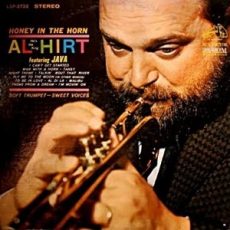
Daily Dose Of Jazz…
Alois Maxwell Hirt was born on November 7, 1922 in New Orleans, Louisiana to a police officer father. At the age of six, he got his first trumpet, which had been purchased at a local pawnshop. He played in the Junior Police Band with friend Roy Fernandez, the son of Alcide Nunez. By 16 he was playing professionally with his friend Pete Fountain, while attending Jesuit High School. During this time, he was hired to play at the local horse racing track, beginning a six-decade connection to the sport.
1940 saw Al in Cincinnati, Ohio studying at the Cincinnati Conservatory of Music with Dr. Frank Simon. After a stint as a bugler in the Army during World War II, he performed with various swing big bands, including those of Tommy Dorsey, Jimmy Dorsey, Benny Goodman, and Ina Ray Hutton.
In 1950 Hirt became the first trumpet and featured soloist with Horace Heidt’s Orchestra and after several years on the road he returned to New Orleans working with various Dixieland groups and leading his own bands. He soon signed with RCA Victor and posted twenty-two albums on the Billboard charts in the 1950s and 1960s. He recorded the theme for the 1960s television show The Green Hornet, with arranger and composer Billy May.
From the mid-1950s to early 1960s, Hirt and his band played nightly at Dan’s Pier 600, hosted the hour-long television variety series Fanfare, as the summer replacement for Jackie Gleason and the American Scene Magazine, and would go on to play for Pope John Paul II.
Trumpeter and bandleader Al Hirt died of liver failure on April 27, 1999 at the age of 76, after having spent the previous year in a wheelchair due to edema in his leg.
More Posts: bandleader,history,instrumental,jazz,music,trumpet
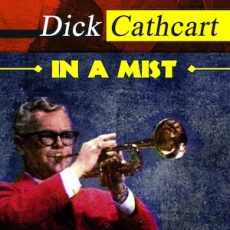
Daily Dose Of Jazz…
Charles Richard Cathcart was born on November 6, 1924 in Michigan City, Indiana. He was a trumpeter for the U.S. Army Air Force Band, and was a member of big bands led by Bob Crosby, Ben Pollack, and Ray Noble.
After World War II he moved to Los Angeles. His friend Jack Webb was playing the part of trumpeter Pete Kelly in the movie Pete Kelly’s Blues and told Cathcart he should supply the music. The band from the movie stayed together in the 1950s for performances and recordings under the name Pete Kelly’s Big Seven.
Cathcart also supplied music for the television show Dragnet, which starred Jack Webb as Joe Friday. He spent much of his career from 1962 to 1968 as a musician on The Lawrence Welk Show. On the Welk show, he met Peggy Lennon, a singer with the Lennon Sisters, and the two married.
Trumpeter Dick Cathcart, who played in both Dixieland and big band genres, died on November 8, 1993 in Los Angeles, California.
More Posts: history,instrumental,jazz,music,trumpet
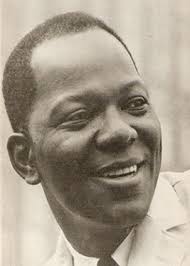
Jazz Poems
JAZZ
It starts with an alto horn, and a young
boy who’d grown faster than he should have, and
who’d become great before he should have, and
who sought for the source of the feeling deep in-
side before he should have. He stood in his room
and started with a short burst of notes, and then
sought the tone he’d felt inside him, but which
he couldn’t match he couldn’t match by blowing.
He blew, fast, and beautifully; seeking the right
burst of notes, notes blown so fast that only God’s
perfection would be a match for it. He tried for
a tone that he’d never heard, but which he knew
as a sensation of mystery, of greatness, a feeling
that he was bigger than he seemed to be, could
blow faster than his fingers were letting him,
could cry out the tone that cried within him. All
this strained inside him, strained and drove him,
pushed him and made him whip his fingers upon
the valves of his horn until they hurt. And his
lungs seemed to bleed inside; his eyes ran water,
and he kept blowing, and blowing, with his eyes
closed to the white of the daytime and the touch
of the wind and the sound of the fists banging
at the door, and the bark of the voices outside
his door, shouting: Open up! It’s the police!
What’s going on in there?
FRANK LONDON BROWN
from Jazz Poems ~ Selected and Edited by Kevin Young
More Posts: book,classic,collectible,history,jazz,library,poet
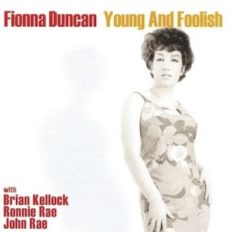
Daily Dose Of Jazz…
Fionna Duncan was born on November 5, 1939 in a temperance hotel in Garelochhead, Scotland a few weeks into the Second World War. The doctor had refused to come to the family home in Portincaple, on the shores of Loch Long, because a blackout was in operation. The youngest of three, she initially preferred to sing, although she later began to accompany herself on guitar and ukulele.
When she was six, the family moved to Rutherglen and it was there, thanks to Rutherglen Academy’s ballads and blues club, that she added folk and skiffle songs to the Gilbert & Sullivan operettas she sang at the local music society. By sixteen, while still at school, she was singing in talent competitions and with local jazz bands. One competition win resulted in an audition for television and the chance to make a recording.
A family trip to the United States had her singing on radio and television, and Riverside Records offered Fionna a recording contract. Not wanting to live in the States, a stipulation of the deal, she turned it down along with the chance to become label-mates with pianists Thelonious Monk and Bill Evans, and saxophonists Cannonball Adderley and John Coltrane. Back in Glasgow, Scotland appearances on the weekly TV show Skiffle Club with the Joe Gordon Folk Four, singing with the Steadfast Jazz Band, and another talent competition win and auditions, she met clarinettist Forrie Cairns.
With her mother’s blessing Fionna joined Cairns’ All-Stars whom she would go on to work into the 2000s. In 1959 she and Forrie were invited to join the Clyde Valley Stompers, a traditional jazz band and recorded the album, Have Tartan Will Trad.
She won the JazzBeat Award for Top Singer in 1960 met Louis Armstrong at his own insistence when they shared a bill, and also met Lena Horne and the Beatles. She continued touring until 1964, then took up residence in London, where she hosted the Georgian Nightclub in the West End, singing with Kenny Ball and Humphrey Lyttelton, among other prominent musicians of the time. Suffering five slipped discs and being hospitalized for a year, Fionna changed careers and trained as a hairdresser. However, the lure of the microphone and telling stories in song pulled her back to performing.
In 1985 she put together her own group with her partner, bassist Ronnie Rae, Ronnie’s son John on drums and Brian Kellock on piano. Together they became the house trio for Fionna’s Vocal Jazz Workshops, where she became a supportive mentor. if also quite a tough critic to a veritable legion of budding jazz singers as her workshops developed into a regular feature at Glasgow Jazz Festival. The festival’s late-night club also benefited from Fionna’s ‘strict but fair’ hosting skills for several years.
Vocalist Fionna Duncan continued to sing and teach into her seventies, was voted Best Jazz Vocalist and received a Lifetime Achievement award at the Scottish Jazz Awards, died at 83 on December 6, 2022.
More Posts: bandleader,educator,history,instrumental,jazz,music,vocal
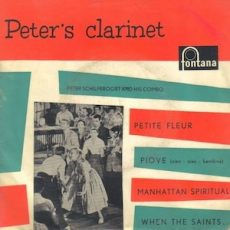
Daily Dose Of Jazz…
Anne Peter Schilperoort was born on November 4, 1919 in The Hague, Netherlands. Famous for his work with the Dutch Swing College Band, and projects with other well-known musicians.
He is most recognized as a saxophone and clarinet player, but also played the guitar and the banjo. Leading the Dutch Swing College Band from 1946 to 1955, then from 1960 to 1990, his style was Dixieland, a style popular at the start of the twentieth century. His band became widely popular across Europe, Australia, Asia and South America in 1960, known as a Dixieland revival band.
Peter Schilperoort, also known as Pat Bronx, died in Leiderdorp, Netherlands on November 17, 1990 at the age of 71.
More Posts: banjo,clarinet,guitar,history,instrumental,jazz,music,saxophone



